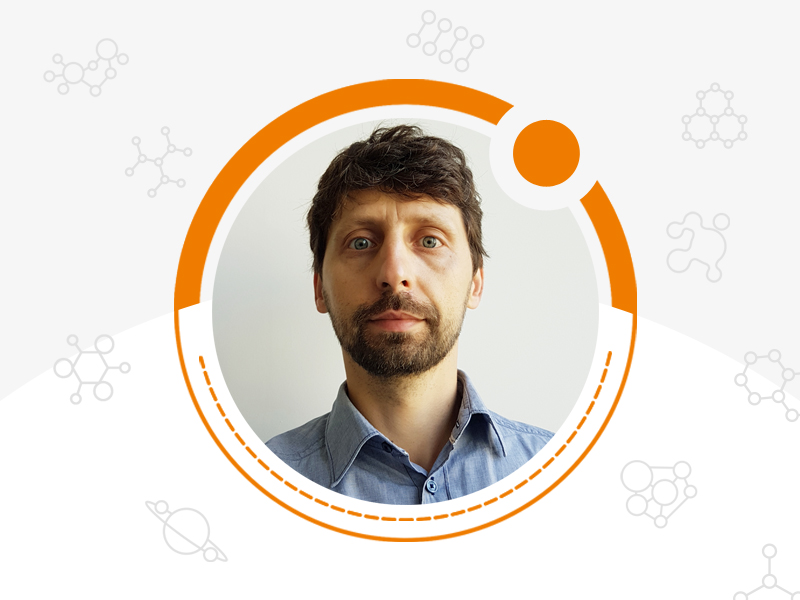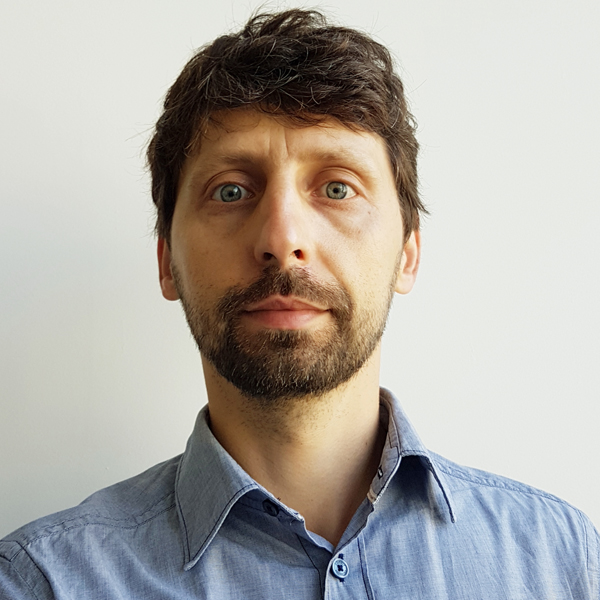
15 September
INTERNATIONAL DOT DAY

„Save the date” is a series of articles that have been written to celebrate various unusual holidays. The authors of the presented materials are students, doctoral students and employees of the Faculty of Science and Technology of the University of Silesia.
International Dot Day, a global celebration of creativity, courage and collaboration, began when teacher Terry Shay introduced his classroom to Peter H. Reynolds’ book The Dot on September 15, 2009.
When we hear a “dot”, the first thought that usually comes to mind is the punctuation mark. However, as a symbol, the dot has a much wider application.
Marcin Kurpas, PhD, Associate Professor talks about dots in maths, chemistry and physics. And also about that “the small can be beautiful”.
fot. private archive
When we hear a “dot”, the first thought that usually comes to mind is the punctuation mark. However, as a symbol, the dot has a much wider application. In mathematics, a dot between two vectors or scalars signifies their dot product. Two dots, arranged one below the other, symbolize the action of dividing two numbers. It is also used to indicate a decimal place in numeric notation.
In chemistry, the dot is used, for example, to indicate the number of valence electrons of elements; and in physics, the dot is used, inter alia, to denote the differentiation of a function with respect to a time variable. However, when a physicist (but not only) says that he is researching dots, he means something completely different, namely quantum dots.
Quantum dots are very small objects ranging in size from several to several dozen nanometres (1 nanometre = 10-9m). They were first produced in 1980 by the Russian physicist Alexey Ekimov, and the first theoretical description of Ekimov’s results was proposed by the Russian physicist Alexander Efros.
The adjective “quantum” leads us to the world of quantum mechanics, because the concept of a quantum dot is based on the phenomenon of spatial quantisation, which is fundamental to quantum mechanics. This phenomenon is the effect of the spatial limitation of the particle, e.g. the electron. If we limit the area in which an electron can move to a certain finite volume, its energy states (the so-called spectrum) will be able to assume only strictly defined, discrete values. This happens, for example, in an atom in which electrons are on shells with precisely defined energies. The smaller the area where an electron can be located, the stronger the spatial quantisation and the more distant the energy states from each other.
The analogy to the atom is not accidental here. It turns out that the states of an electron in a quantum dot are very similar to the states of an electron in an atom. Therefore, quantum dots are also called artificial atoms. Like atoms, quantum dots are optically active systems and when excited they can emit light of a selected wavelength. This allows them to be used in electronic displays, for the production of luminescent paints and in medicine, e.g. as markers of cancer cells or to monitor the drug release process. Quantum dots are also used to build single-electron transistors, in which the flow of electric current can be controlled with the accuracy of one electron, and in quantum technologies, as quantum bits (so-called qubits).
The above-mentioned applications are only a part of the possibilities of these small objects, which prove that small can be beautiful.
End and dot!






